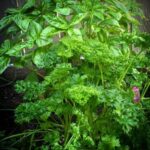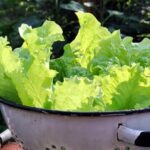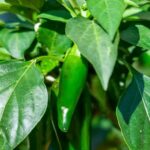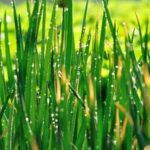Are banana peels good for vegetable gardens? When it comes to gardening, many people are turning to natural and organic methods for fertilizing their plants. One such option that is gaining popularity is the use of banana peels as a potential fertilizer for vegetable gardens. Banana peels are packed with nutrients that can benefit the soil and plants, making them a sustainable and environmentally friendly choice for gardeners.
Using natural and organic materials in gardening has become increasingly popular as people seek to minimize the use of chemicals and artificial products. Banana peels offer a way to provide essential nutrients to vegetable gardens without relying on synthetic fertilizers.
In this article, we will explore the nutritional content of banana peels, how to prepare them for use in the garden, their benefits, different application methods, practical tips, debunk common myths and misconceptions, and ultimately encourage readers to consider using banana peels as a natural fertilizer for their vegetable gardens. By incorporating banana peels into your gardening routine, you can promote healthy plant growth while also reducing waste.
Stay tuned as we delve into the various aspects of using banana peels in vegetable gardens, from understanding their nutrient content to maximizing their effectiveness as a natural fertilizer. Discover how this simple kitchen ingredient can be transformed into a valuable resource for your garden, providing both nourishment for your plants and environmental sustainability.
Nutritional Content of Banana Peels
Banana peels are often overlooked as a potential source of nutrients for plants, but they actually contain valuable minerals and organic compounds that can benefit vegetable gardens. When considering the nutritional content of banana peels, it becomes evident why they can be a great natural fertilizer for plants.
Here are some of the key nutrients found in banana peels:
– Potassium: Banana peels are rich in potassium, a vital nutrient for plant growth and overall health. Potassium helps regulate water movement within the plant cells and is essential for photosynthesis and fruit development.
– Phosphorus: Another important nutrient present in banana peels is phosphorus, which helps with root development, flower formation, and seed production in plants.
– Calcium: Banana peels also contain calcium, which plays a crucial role in cell wall structure and strength, as well as overall plant metabolism.
These nutrients make banana peels a valuable addition to vegetable gardens, providing an organic source of potassium, phosphorus, and calcium that can promote healthy growth and abundant yields.
To prepare banana peels for use in the garden, follow these steps:
1. Drying: Begin by drying the banana peels either under the sun or using a dehydrator until they become crispy.
2. Chopping: Once dried, chop the banana peels into smaller pieces to facilitate decomposition and nutrient release.
3. Composting: Incorporate the chopped banana peels into your compost pile or bin, where they will continue to break down and enrich the compost with their valuable nutrients.
By following these simple steps, you can create a nutrient-rich compost that incorporates the beneficial properties of banana peels for your vegetable garden.
How to Prepare Banana Peels for the Garden
Banana peels are a valuable resource for enriching the soil in vegetable gardens due to their high nutritional content. To prepare banana peels for the garden, follow these simple steps:
1. Drying: Begin by drying out the banana peels. You can do this by simply laying them out in the sun until they become completely dry. Alternatively, you can use a dehydrator to speed up the process.
2. Chopping: Once the banana peels are dry, chop them into smaller pieces. This will help speed up the decomposition process and make it easier for the nutrients to be released into the soil.
3. Composting: After chopping the banana peels, add them to your compost pile or bin. Mix them in with other organic materials such as grass clippings, leaves, and kitchen scraps. This will allow the nutrients from the banana peels to break down and become readily available for your plants.
By following these steps, you can maximize the effectiveness of banana peels as a natural fertilizer for your vegetable garden. It’s a sustainable way to recycle kitchen waste and provide essential nutrients to your plants at the same time.
Remember that moderation is key when using banana peels in your garden. While they offer great benefits, be mindful not to overuse them as excessive amounts may attract pests or disrupt the balance of nutrients in the soil. With proper preparation and application, banana peels can be a fantastic addition to your gardening routine.
Benefits of Using Banana Peels in Vegetable Gardens
Banana peels are not only a popular organic waste product that can be composted, but they also provide an array of nutrients that are beneficial for vegetable gardens. As a natural and sustainable option, banana peels can be used as an effective fertilizer to enhance the growth and productivity of various vegetables. The key nutrients found in banana peels that are particularly advantageous for plants include potassium, phosphorus, and calcium.
Potassium is essential for strong root development and overall plant health, while phosphorus aids in flower and fruit production. Additionally, calcium helps to prevent common plant diseases such as blossom end rot in tomatoes and peppers. By incorporating these nutrients into the soil through the use of banana peels, vegetable gardens can experience improved soil structure, better plant growth, and increased fruit yield.
To prepare banana peels for use in vegetable gardens, it is important to properly dry and chop them before integrating them into the soil or composting them. Drying the banana peels allows for easier handling and storage while chopping them into smaller pieces aids in the decomposition process. Furthermore, composting banana peels alongside other organic materials can create a nutrient-rich fertilizer that will benefit the entire garden.
Incorporating banana peels into vegetable gardens can be done through various methods such as burying fresh peel pieces directly into the soil around plants or adding dried or composted peels to the garden bed or container pots. Regardless of the method chosen, proper application techniques must be followed to ensure that the nutrients from the banana peels are effectively absorbed by the plants without attracting pests or causing any negative effects on the garden ecosystem.
| Benefit | Details |
|---|---|
| Improved Soil Structure | Integrating banana peels enriches the soil with nutrients promoting better soil quality |
| Better Plant Growth | The presence of potassium aids in root development leading to healthier plants |
| Increased Fruit Yield | The phosphorus content contributes to greater flower and fruit production resulting in higher yield |
Overall, utilizing banana peels in vegetable gardens offers numerous benefits while serving as an environmentally friendly way to recycle kitchen waste. However, it is important to debunk any myths or misconceptions related to using banana peels in gardens and address concerns about potential negative effects before incorporating this natural fertilizer into gardening practices.
Application of Banana Peels in the Garden
Banana peels are a versatile and natural option for fertilizing vegetable gardens. When used properly, they can have numerous benefits for the soil and plants. There are several ways to apply banana peels in the garden to maximize their effectiveness and promote healthy growth.
Using Fresh Banana Peels
One way to utilize banana peels in the garden is by simply placing fresh peels directly into the soil around plants. This method allows the nutrients within the peels to gradually break down and release into the soil as they decompose. To do this, simply cut the fresh banana peels into small pieces and bury them near the base of plants. This can be especially beneficial for plants that require a steady supply of potassium, such as tomatoes and peppers.
Drying Banana Peels
Another option is to dry out banana peels before using them in the garden. Dried banana peels can be ground into a powder and sprinkled onto the soil or dissolved in water to create a liquid fertilizer. Drying banana peels helps to concentrate their nutrients, making them easier to store and apply when needed.
Composting Banana Peels
Composting is an effective way to break down banana peels while also enriching the overall quality of compost. By composting banana peels along with other organic materials, gardeners can create nutrient-rich compost that can be used to improve soil structure and fertility. Composted banana peels add valuable organic matter to the soil, which can enhance moisture retention and promote healthy microbial activity.
By considering these various methods of application, gardeners can effectively incorporate banana peels into their gardening practices, reaping the benefits of this natural fertilizer for their vegetable gardens.
Tips for Using Banana Peels in Vegetable Gardens
Using banana peels as a natural fertilizer for vegetable gardens can provide numerous benefits to the soil and plants. However, it is important to use them effectively to maximize their potential. Here are some tips for using banana peels in vegetable gardens:
Moderation Is Key
While banana peels offer valuable nutrients to the soil, it is essential not to overdo it. Excessive use of banana peels can lead to an imbalance in the soil’s pH levels and cause harm to the plants. It is recommended to use banana peels sparingly and in combination with other organic fertilizers for best results.
Proper Application Methods
To ensure that the nutrients from banana peels are effectively absorbed by the plants, it is important to prepare them properly. Whether using fresh, dried, or composted banana peels, they should be applied directly into the soil around the base of the plants. Avoid placing them too close to the stems or leaves, as this could attract pests and create an environment for rotting.
Incorporate Banana Peels Into Compost
One effective way to use banana peels in vegetable gardens is by incorporating them into compost. By chopping or blending the peels before adding them to a compost pile, they will break down more easily and provide valuable nutrients as the compost matures. This method also helps in reducing waste and promoting sustainability in gardening practices.
By following these tips, gardeners can make the most of using banana peels as a natural fertilizer for their vegetable gardens. With proper moderation, application methods, and incorporation into compost, banana peels can contribute to improved soil structure and plant growth without any negative effects on the garden ecosystem.
Common Myths and Misconceptions About Banana Peels in Gardens
Using banana peels in vegetable gardens has been a topic of interest for many gardeners, but there are some common myths and misconceptions that need to be addressed. One of the most prevalent misconceptions is that banana peels attract pests and animals to the garden.
In reality, properly composted banana peels do not attract any more pests than other organic materials used for gardening. It is important to chop or compost the peels to accelerate the decomposition process and avoid any potential issues.
Another myth surrounding banana peels in gardens is that they can harm plants due to their acidity. While it is true that fresh banana peels are slightly acidic, the acidity diminishes as they decompose. In fact, banana peels are considered a valuable source of nutrients such as potassium, phosphorus, and calcium which can benefit vegetable plants. When used in moderation and properly prepared, banana peels can contribute to healthier soil and improved plant growth.
There is also a misconception that adding too many banana peels to the garden can cause an imbalance in the soil’s nutrient content. To counteract this myth, it is important to use a variety of organic materials for fertilizing the garden and maintain a balanced nutrient composition. Additionally, combining different types of organic matter such as composted kitchen scraps, grass clippings, and dried leaves with banana peels can ensure a well-rounded source of nutrients for vegetable plants.
| Myth/Misconception | Reality |
|---|---|
| Banana peels attract pests | Properly composted peels do not attract more pests than other organic materials |
| Banana peels harm plants due to acidity | Acidity decreases as they decompose; provide valuable nutrients for plants |
| Excessive use causes nutrient imbalance | Combine with other organic materials for balanced nutrition in soil |
Conclusion
In conclusion, banana peels can indeed be a valuable and sustainable option for fertilizing vegetable gardens. Their high nutrient content, including potassium, phosphorus, and calcium, makes them an excellent natural fertilizer for promoting plant growth and fruit yield. Additionally, the process of preparing banana peels for the garden is relatively simple, involving drying, chopping, and composting to maximize their effectiveness.
One of the key benefits of using banana peels in vegetable gardens is the improvement in soil structure, which contributes to healthier plant growth. By incorporating banana peels into the garden, gardeners can also reduce waste by utilizing a product that might otherwise end up in the trash. As such, considering the environmental impact of gardening practices is an important aspect to bear in mind.
With proper application methods and moderation, banana peels can play a significant role in enriching the soil and promoting a sustainable gardening approach. Therefore, as individuals seek natural and organic options for nurturing their plants, they should definitely consider harnessing the benefits of banana peels when tending to their vegetable gardens.
Frequently Asked Questions
Which Vegetable Plants Like Banana Peels?
Tomato plants, pepper plants, and roses are among the vegetable plants that benefit from banana peels. The potassium and phosphorus in banana peels are particularly beneficial for these plants.
How Do You Prepare a Banana Peel for a Garden?
To prepare a banana peel for the garden, you can cut them into small pieces to help speed up their decomposition process. Bury the pieces around the base of the plant or mix them into your compost heap.
Do Tomato Plants Like Banana Peels?
Yes, tomato plants do like banana peels. The potassium in banana peels helps with fruit production and overall plant health. Simply lay the peels around the base of the tomato plant or add them to your compost pile to provide essential nutrients.

If you’re looking to get into vegetable gardening, or are just looking for some tips on how to make your current garden better, then you’ve come to the right place! My name is Ethel and I have been gardening for years. In this blog, I’m going to share with you some of my best tips on how to create a successful vegetable garden.





